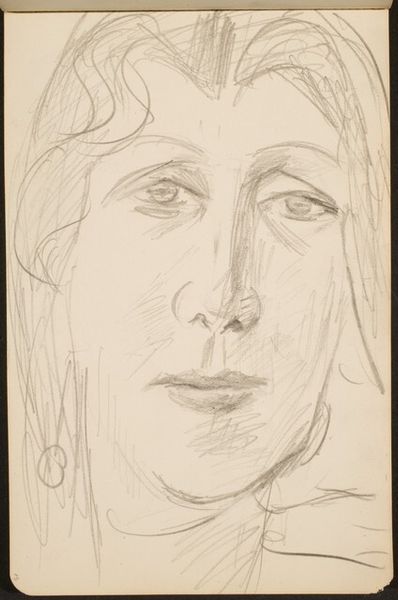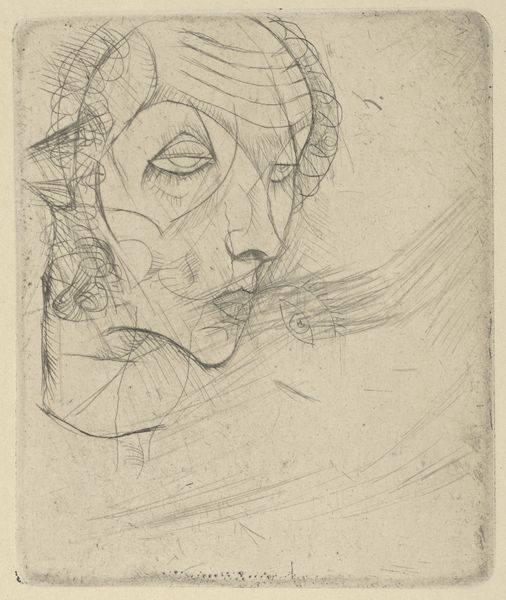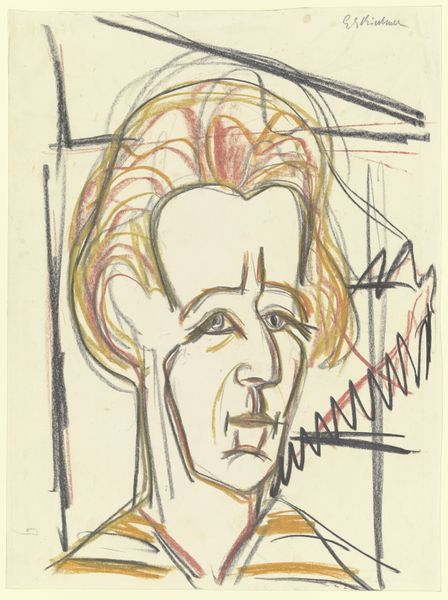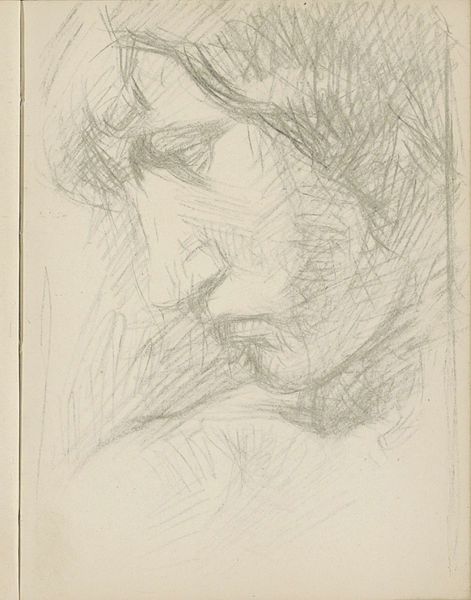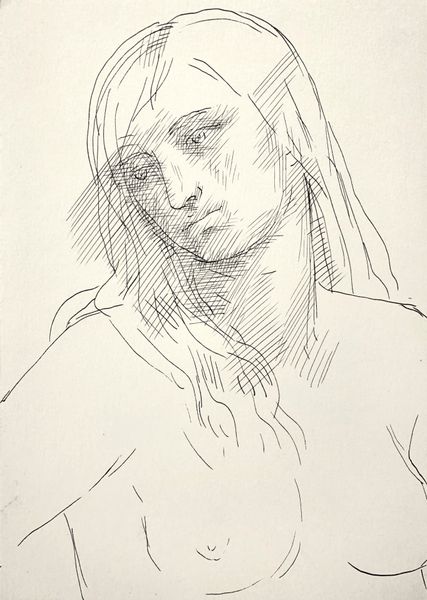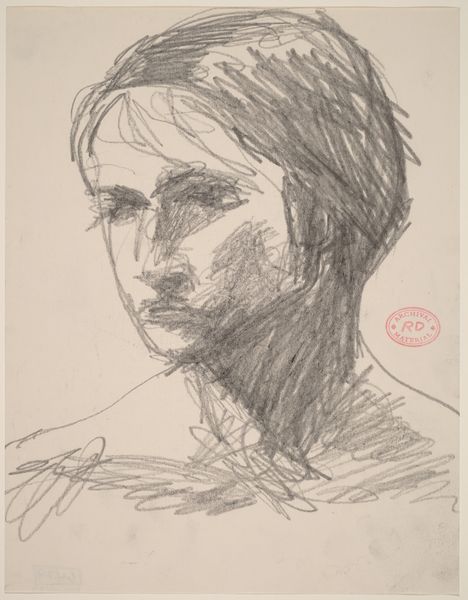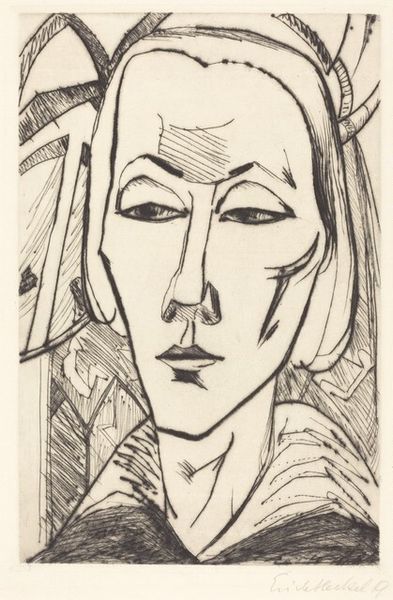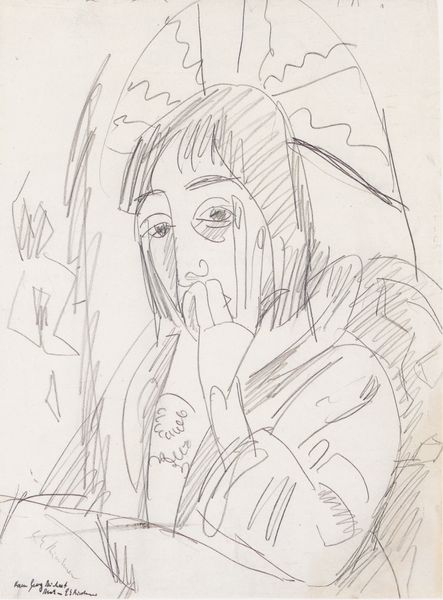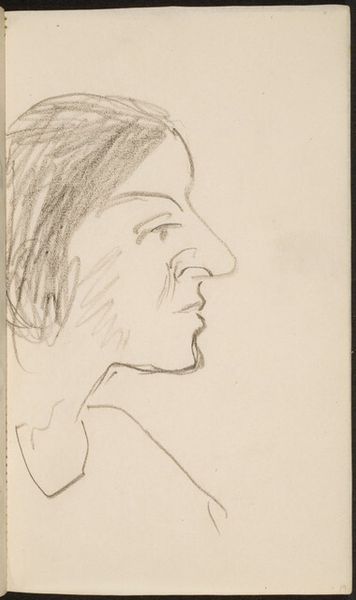
drawing, paper, pencil
#
portrait
#
17_20th-century
#
drawing
#
facial expression drawing
#
pencil sketch
#
paper
#
portrait reference
#
pencil drawing
#
pencil
#
animal drawing portrait
#
portrait drawing
#
facial study
#
facial portrait
#
portrait art
#
italian
#
futurism
#
digital portrait
Copyright: Public Domain
Curator: Here we have Umberto Boccioni's "Woman's Head" from 1911, housed right here at the Städel Museum. It’s a pencil drawing on paper, a striking example of his early Futurist explorations. Editor: The immediate feeling is one of raw energy, isn’t it? You can almost feel the graphite on the page. Look at the frantic scribbles—they convey so much tension and the artist's sheer restlessness. Curator: Absolutely. This sketch, while a seemingly quick study, carries the weight of the modern anxieties and dynamism that fueled Futurism. Notice how her features are not static; they’re fractured, as if capturing movement in a single image. Her weary eyes draw you in, and even though it’s just a sketch, the mood is incredibly vivid. Editor: The Futurist focus on speed, mechanization, and a break from the past… it makes me think about how these mass produced pencils, seemingly disposable, allowed for an immediate connection to the artwork. There's no slow oil painting here; just the rapid friction between pencil and paper to translate the fleeting impressions of the modern world. Curator: I see this figure as representative of the evolving perception of women in that era—caught between tradition and modernity, their roles were in a constant state of redefinition. The drawing isn’t just about her face; it captures the very essence of a woman navigating that period of transition. It makes me think about the layers of meaning embedded within seemingly simple representations of the female figure. Editor: It’s fascinating to see a study of the female form rendered through such a stark, almost brutal material process. Consider the context—Futurism was often loud, brash, even violent in its manifesto proclamations. That the delicacy of a portrait is achieved with the industrial pencil speaks to a more complex conversation of modern labor, social identity, and the materials available at the time. Curator: That's insightful. In viewing this "Woman's Head," we not only engage with Futurism's radical approach to form but also with the poignant human narratives captured within those dynamic lines. Editor: Yes. Boccioni used mass-produced tools to evoke both modernity and individual anxiety. I am left considering the dialogue of form, labor and the evolving place of women in early twentieth century culture.
Comments
No comments
Be the first to comment and join the conversation on the ultimate creative platform.

